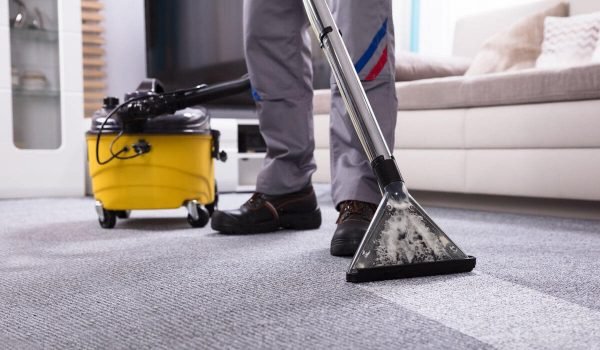Do you want to have a safer home for yourself and your loved ones? If so, you are not alone. Granite Foundation Repair company professionals warn that there are a lot of potential risks and dangers that lurk in our homes. Aside from a faulty foundation, dangers include fire, electrical shocks, burglary, or accidents involving children. Fortunately, there are some simple tricks that you can implement to improve your home safety and prevent these unwanted scenarios.
Table of Contents
Fire Safety
One of the most common and dangerous threats to home safety is fire. According to the National Fire Protection Association, fire departments in the United States responded to an average of 353,100 home fires per year between 2014 and 2018. These fires caused an average of 2,620 civilian deaths, 11,030 civilian injuries, and $7.2 billion in direct property damage per year.
To avoid becoming a part of these statistics, you need to take some basic fire safety measures in your home. Here are some tips:
- Install smoke detectors on every level of your home, inside each bedroom, and outside each sleeping area. Test them monthly and replace the batteries at least once a year.
- Keep at least one fire extinguisher on each floor of your home, and make sure you know how to use it. Check the expiration date and pressure gauge regularly and replace or recharge as needed.
- Create a fire escape plan with your family and practice it at least twice a year. Identify two ways out of every room and designate a meeting place outside. Teach your children how to call 911 in case of an emergency.
- Avoid fire hazards such as candles, space heaters, flammable liquids, and overloaded outlets. Keep them away from curtains, furniture, and other combustible materials. Never leave them unattended or near children or pets.
- Keep matches and lighters out of reach of children and store them in a secure place. Teach your children about the dangers of playing with fire and what to do if they encounter it.
Electrical Safety
Another common source of home accidents is electricity. According to the Electrical Safety Foundation International, electrical failures or malfunctions were involved in an estimated 44,800 home fires in 2017, resulting in 410 deaths, 1,650 injuries, and $1.3 billion in property damage.
To prevent electrical shocks, fires, and injuries in your home, you need to follow some electrical safety guidelines. Here are some tips:
- Hire a licensed electrician to inspect and repair any faulty wiring or electrical problems in your home. Don’t attempt to do it yourself unless you have the proper training and equipment.
- Use electrical appliances according to the manufacturer’s instructions and safety precautions. Don’t overload them or use them with damaged cords or plugs. Unplug them when not in use or when cleaning them.
- Use extension cords sparingly and only for temporary purposes. Don’t run them under rugs or furniture or across doorways or windows. Don’t plug multiple cords into one outlet or use adapters that exceed the outlet’s capacity.
- Install ground fault circuit interrupters (GFCIs) in areas where water and electricity may come into contact, such as bathrooms, kitchens, basements, garages, and outdoor outlets. These devices can detect and prevent electrical shocks by shutting off the power when a fault is detected.
- Teach your children about the dangers of electricity and how to use it safely. Keep them away from outlets, cords, and appliances. Cover unused outlets with childproof caps or plates.
Home Security
Another important aspect for a safer home is home security. According to the FBI, there were an estimated 1.4 million burglaries in the United States in 2019, resulting in $3 billion in property losses.
To protect your home from intruders, vandals, and thieves, you need to take some home security measures. Here are some tips:
- Install a home security system that suits your needs and budget. You can choose from various options such as alarms, cameras, sensors, locks, lights, and smart devices that can alert you and the authorities in case of a break-in or suspicious activity.
- Secure your doors and windows with sturdy locks and frames. Use deadbolts on exterior doors and reinforce them with strike plates and hinges. Use window locks or bars on accessible windows and sliding glass doors.
- Illuminate your outdoor areas with motion-activated lights or timers that can deter potential intruders from approaching your home at night. You can also use solar-powered lights or low-voltage landscape lighting to enhance the visibility and appearance of your property.
- Install surveillance cameras around your home that can capture clear images of anyone who enters or exits your premises. You can also use video doorbells that can allow you to see and communicate with visitors remotely via your smartphone or tablet.
- Keep valuables out of sight from windows or doors that can tempt burglars to target your home. Store them in a safe or hidden place that only you know about. You can also use decoys or diversion safes that can fool thieves into thinking they have found something valuable.
Childproofing
If you have children or plan to have them in the future, you need to make sure your home is a safe and fun place for them to grow and explore. According to the Centers for Disease Control and Prevention, unintentional injuries are the leading cause of death among children in the United States, with an average of 12,175 deaths and 9.2 million emergency department visits per year between 2001 and 2010.
To prevent injuries and accidents involving children in your home, you need to childproof it according to their age and developmental stage. Here are some tips:
- Secure cabinets, drawers, and doors that contain dangerous items such as knives, scissors, medicines, cleaning products, or firearms. Use locks, latches, or magnets that can keep them closed and out of reach of curious fingers.
- Cover outlets, cords, and power strips with childproof covers or guards that can prevent children from inserting objects or fingers into them. Use cordless blinds or curtains that can eliminate the risk of strangulation from dangling cords.
- Install safety gates at the top and bottom of stairs and around areas that are off-limits to children such as kitchens, bathrooms, fireplaces, or pools. Use hardware-mounted gates that can withstand pressure and won’t collapse or tip over.
- Anchor heavy furniture and appliances such as bookcases, dressers, TVs, or refrigerators to the wall or floor with straps, brackets, or anchors that can prevent them from falling over or crushing children. Secure loose items such as lamps, vases, or picture frames with adhesive or Velcro that can keep them in place.
- Store toys in bins or baskets that are easy to access and clean. Avoid toys that are small, sharp, or have detachable parts that can pose a choking hazard. Check the labels for age-appropriateness and safety standards.
Conclusion
Home safety is not something you can take for granted. It requires constant attention and action to ensure that your home is a safe haven for you and your family. By following these simple tricks, you can reduce the risks of accidents, injuries, and losses in your home and enjoy a more secure and comfortable living environment.
Remember, home safety is not a one-time thing. It’s an ongoing process that requires your involvement and commitment. So don’t delay. Start implementing these simple tricks today and make your home a safer place for tomorrow!





